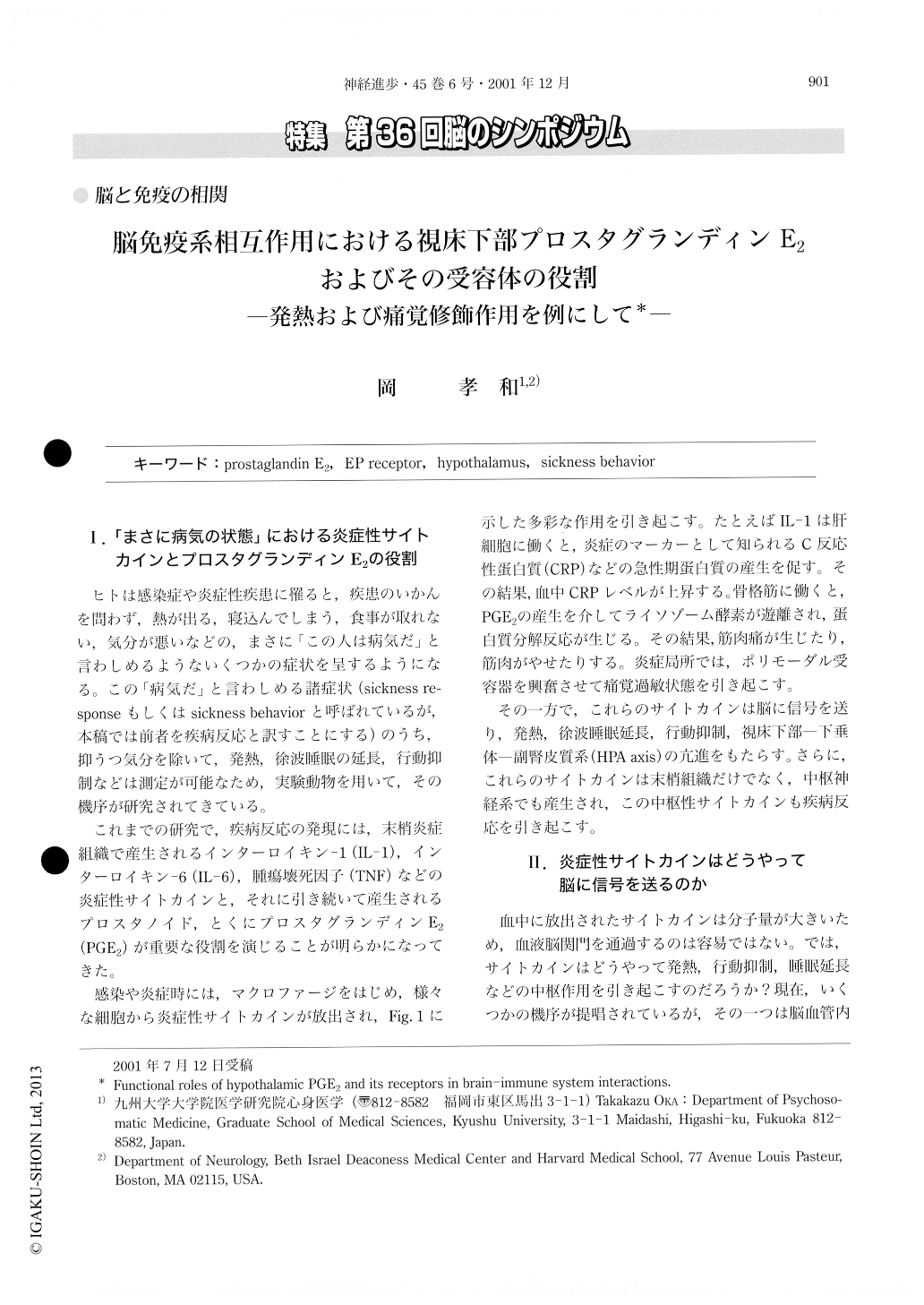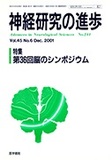Japanese
English
- 有料閲覧
- Abstract 文献概要
- 1ページ目 Look Inside
I.「まさに病気の状態」における炎症性サイトカインとプロスタグランディンE2の役割
ヒトは感染症や炎症性疾患に罹ると,疾患のいかんを問わず,熱が出る,寝込んでしまう,食事が取れない,気分が悪いなどの,まさに「この人は病気だ」と言わしめるようないくつかの症状を呈するようになる。この「病気だ」と言わしめる諸症状(sickness responseもしくはsickness behaviorと呼ばれているが,本稿では前者を疾病反応と訳すことにする)のうち,抑うつ気分を除いて,発熱,徐波睡眠の延長,行動抑制などは測定が可能なため,実験動物を用いて,その機序が研究されてきている。
これまでの研究で,疾病反応の発現には,末梢炎症組織で産生されるインターロイキン-1(IL-1),インターロイキン-6(IL-6),腫瘍壊死因子(TNF)などの炎症性サイトカインと,それに引き続いて産生されるプロスタノイド,とくにプロスタグランディンE22(PGE2)が重要な役割を演じることが明らかになってきた。
Animals suffering from infectious or inflammatory diseases exhibit sickness symptoms including fever, pain, anorexia, sleepiness, or decreased activity. Recent studies have revealed that proinflammatory cytokines such as interleukin-1 (IL-1) , interleukin-6, and tumor necrosis factor, and subsequently induced prostaglandin E2 (PGE2 ) play an important role in the development of sickness symptoms and acute phase response such as an increase in serum C-reactive protein and activation of the hypothalamic-pituitary-adrenal (HPA) axis.

Copyright © 2001, Igaku-Shoin Ltd. All rights reserved.


